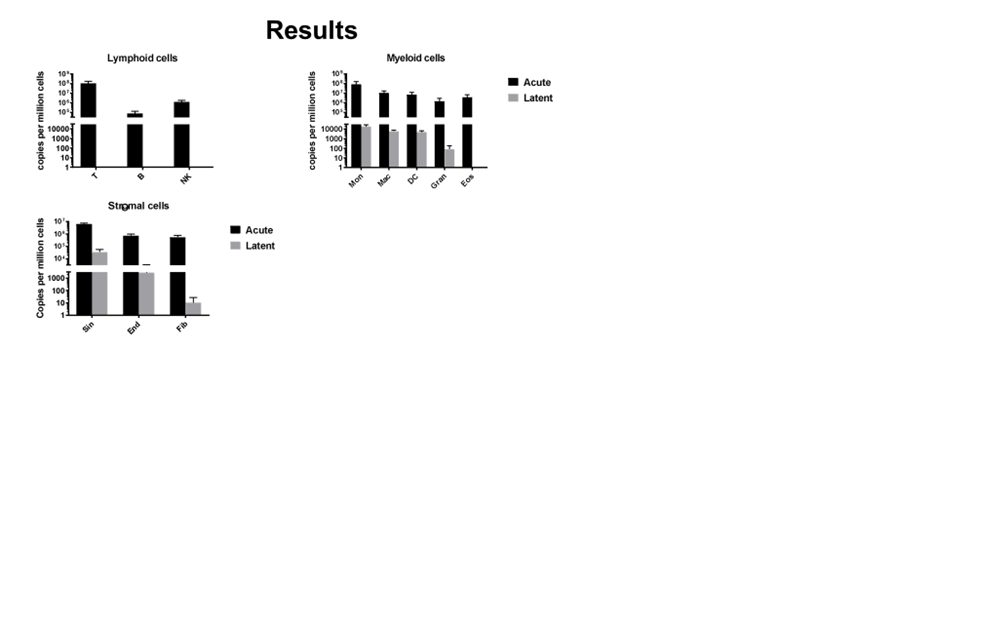Identification of Cell Types That Harbor Cytomegalovirus DNA in Acutely and Latently Infected Mice Spleen
1Illinois Math and Science Academy, Aurora, IL, 2Comprehensive Transplant Center, Northwestern University, Chicago, IL
Meeting: 2020 American Transplant Congress
Abstract number: C-377
Keywords: Cytomeglovirus, Infection, Mice, Rejection
Session Information
Session Name: Poster Session C: Endothelial Cell Biology
Session Type: Poster Session
Date: Saturday, May 30, 2020
Session Time: 3:15pm-4:00pm
 Presentation Time: 3:30pm-4:00pm
Presentation Time: 3:30pm-4:00pm
Location: Virtual
*Purpose: Cytomegalovirus (CMV) is a ubiquitous β‐herpesvirus that infects majority of humans. Primary CMV infection may be asymptomatic or manifests as a self‐limited febrile illness in immunocompetent individuals. After primary infection, CMV persists as a latent virus predominantly within the splenic cells (splenocytes) in a dormant state, which then serves as reservoir for reactivation and transmission to susceptible individuals, such as solid organ transplant (SOT) recipients. It is an important cause of morbidity (leading to rejection of an organ) and mortality after SOT. There is controversy regarding which cell types that harbor viral DNA during acute and latent stages of CMV infection. The purpose of our experiment was to study the different splenic cell types that harbor the viral DNA during the acute and latent CMV infection utilizing a murine model. We hypothesized that most of splenocytes will harbor viral DNA in the acutely infected mice, whereas only few types of splenocytes will harbor viral DNA in latently infected mice.
*Methods: We isolated splenocytes from acute as well as latently infected mice. The splenocytes were then sorted into different cell types. DNA was extracted and the concentration measured from sorted splenocytes utilizing Q-PCR with primers and probe specific for MCMV genome. Mouse cellular GAPDH served as internal control.
*Results: Please see the graph below:
Majority of the myeloid cells (monocytes, macrophages, dendritic cells, granulocytes and eosinophils) and all the stromal cells (sinus lining cells, endothelium, fibroblasts harbored MCMV in the latent stage. However, none of the lymphoid cells (T, B, and NK cells) harbored the virus in the latent stage.
*Conclusions: All types of sorted splenocytes harbor viral DNA in acute infection, but only myeloid cells and stromal cells harbor viral DNA in latently infected mice. These results indicate that MCMV have broad tropism in spleen in acute infection, and only can establish latent infected in certain cell types. Modification of experimental protocol to further refine the isolation of CMV DNA from different splenocytes is currently being pursued at CTC. Further studies in this area will allow accurate therapies to be developed and directed prevent reactivation of latent CMV infections in SOT recipients.
To cite this abstract in AMA style:
Maganti AS, Liu X, Abecassis M. Identification of Cell Types That Harbor Cytomegalovirus DNA in Acutely and Latently Infected Mice Spleen [abstract]. Am J Transplant. 2020; 20 (suppl 3). https://atcmeetingabstracts.com/abstract/identification-of-cell-types-that-harbor-cytomegalovirus-dna-in-acutely-and-latently-infected-mice-spleen/. Accessed December 14, 2025.« Back to 2020 American Transplant Congress

